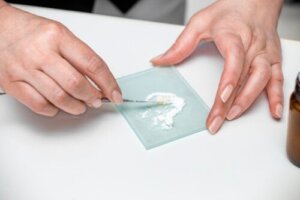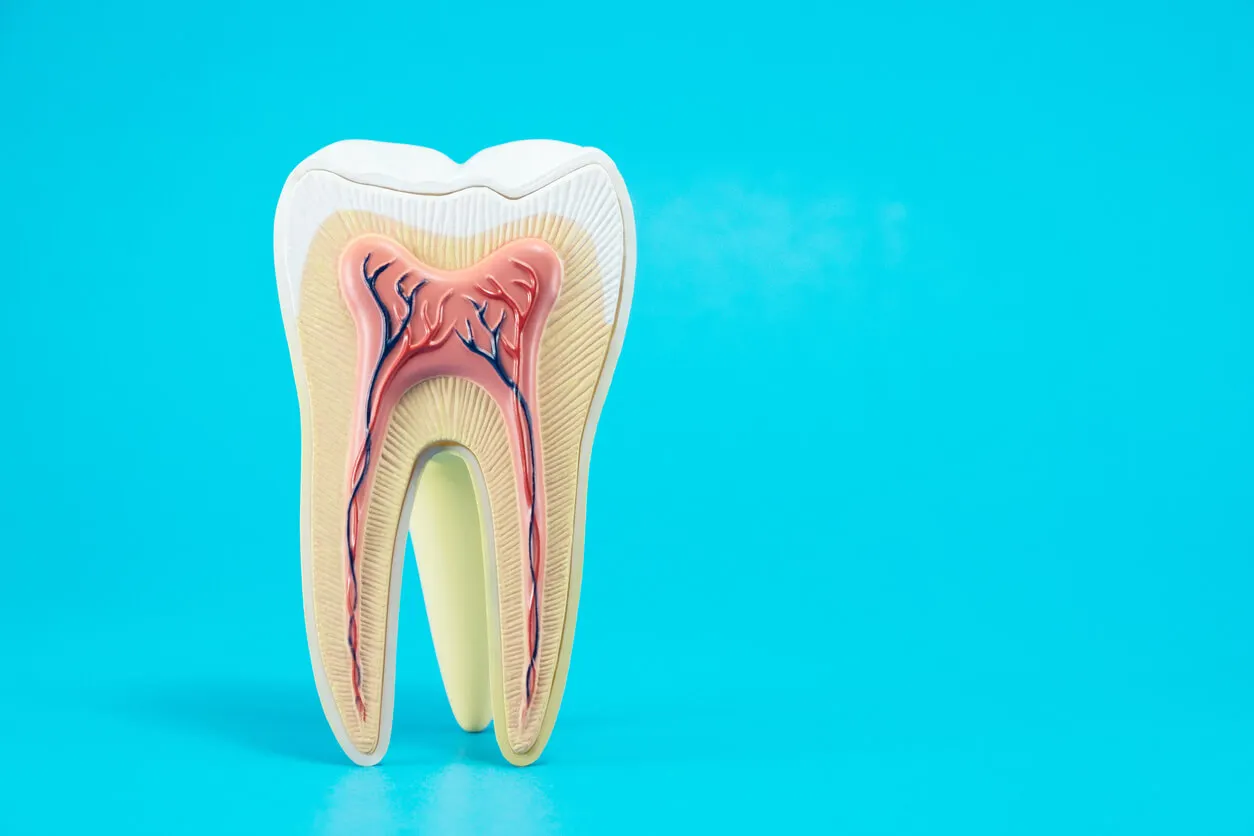Dental Cement: All its Types and Uses


Written and verified by the dentist Vanesa Evangelina Buffa
Talking about dental cement can be confusing. In dentistry, it’s a term that can refer to two very different types of materials.
On the one hand, dental cement (technically called dental cementum) is one of the layers that make up the tooth. It’s s a hard tissue that covers the tooth root.
On the other hand, it also refers to different artificial materials that are used in some dental treatments to join two structures. They consist of products with particular biological and mechanical characteristics that make them ideal for use on dental surfaces or prostheses.
To avoid confusion between dental cement(um) in the teeth and the one used in dental clinics, in this article we’ll tell you about both. In this way, you’ll be able to understand their differences.
In addition, we’ll explain the uses of artificial dental cement in detail and the different types that are most commonly used. Read on and find out.
The dental cement of the teeth
The dental cementum that makes up the teeth is a hard mineralized tissue similar to bone. It’s found lining the outside of the roots of the teeth.
Its main function is to protect the underlying dentin of the root area. It also serves as an attachment surface for the periodontal ligament fibers that hold the tooth to the alveolar bone.
The appearance of dental cementum is light yellow in color and thins in the neck area. However, as it’s only found in the root area, it isn’t usually visible in healthy teeth, as it’s covered by the gums.
Its consistency is slightly softer than dentin. It is made up of inorganic minerals, such as apatite crystals, organic matter (mainly collagen), and glycoproteins and water.
Cementum forms continuously throughout life. As the more superficial areas wear away, new tissue is deposited, layer upon layer, to maintain the attachment to the periodontal ligament intact.
Some people may experience gum recession and loss of cementum. These situations cause sensitivity in those who suffer from these problems.
Pain and discomfort occur because the cementum no longer fulfills its protective function and dentin is exposed. This sensitive tissue isn’t prepared for contact with the outside.
Periodontitis is another condition that can cause cementum loss. This infection causes destruction of the alveolar bone, periodontal ligament, and cementum. With this, the teeth become loose and move. In the most severe cases, they can even be lost.

You may be interested in: Four Ways to Remove Tartar from Your Teeth
What is artificial dental cement?
Now that we have told you about the dental cementum that makes up the dental root, it’s time to talk about artificial dental cement. As we told you at the beginning of the article, in dentistry, this is the name given to products used in the dental clinic for certain treatments.
Artificial dental cement is a material formed by mixing different components. The most common is to combine a powder and a liquid to obtain a fluid product that is applied between two surfaces to join them.
After a certain time, the material hardens, acquiring mechanical resistance and firmness. Thus, the two surfaces on which it was applied look like a single piece.
Other presentations to obtain dental cement consist of mixing Paste A and Paste B, or through capsules for self-mixing. In general, combining the components produces an acid-base reaction that gives them the strength they need. Thus, they can be used as fillings, to protect the pulp, or to bond permanent or temporary repairs.
Dental cement serves a number of main purposes:
- To maintain dental repairs in their correct position for an indefinite period of time. They can be used on temporary repairs that will later be replaced or on definitive prostheses that will no longer be removed.
- To avoid microleakage between the tooth element and the cement. The material must achieve a strong bond with the tooth and generate a seal that prevents the entry of bacteria and debris.
To fulfill these actions, the materials to be used have to have certain requirements: a minimum thickness and to be able to withstand the solubility of saliva. They must also be resistant to masticatory forces and decomposition.
It’s important that they don’t irritate the pulp.
Uses of dental cement
The dental cement used in dental clinics is applied on dental, oral, or prosthetic surfaces in different types of treatments. Here are the most common uses:
- Oral surgery: After some surgical procedures, dental cement is placed on the repaired tissues to promote their recovery. This paste is placed on the wounds to isolate them from the oral environment and improve healing.
- Fixed prosthesis: When the mouth has recovered, dental cement becomes necessary to adhere the fixed prosthesis to the dental pillars that will support them.
- Endodontics: In root canal treatment, dental cement is used to seal the canal of the tooth.
- Temporary fillings.
- Preventive dentistry: To seal pits and fissures.
- Orthodontics: Some dental cements are used to attach appliance components to tooth surfaces.
Read more here: Dental Curettage: Procedure, Results and Care
Types of dental cement
We have already seen that dental cement can be applied in many different dental procedures, but it’s not always the same product. Depending on the needs of each case, different materials are applied. The particular characteristics mean that the dentist can choose the most appropriate ones for each situation.
The results depend, to a large extent, on this choice. The professional must know in detail the composition, advantages, and peculiarities of each product in order to choose the most suitable one.
The chemical composition of dental cement is very varied. Some have been used in dentistry for a long time. Others, however, have only recently been introduced onto the market.
Zinc phosphate dental cement
Zinc phosphate is one of the oldest dental cements in dentistry. This material has been used for oral treatments for more than a century.
The cement is obtained by mixing a powder, zinc oxide, with a liquid, orthophosphoric acid. This combination produces an acid-base reaction that gives rise to the bonding material.
Zinc phosphate is very popular because it’s radiopaque (white on radiographs), inexpensive, and easy to mix and handle. It also provides a high-strength, low-solubility luting system.
Another advantage of this dental cement is its compatibility with all materials used in dental repairs. It’s also easy to remove excess cement after use.
However, zinc phosphate also has some disadvantages. The adhesion it achieves with the tooth structure is relatively low; it can cause microleakage and isn’t very aesthetic.
In some cases, it can cause pulpitis because it’s irritating. This causes tooth sensitivity problems.
Polycarboxylate cement
Polycarboxylate dental cement is another bonding agent used in dentistry. It has a high-quality adhesive capacity that allows a solid bond with the tooth structure.
This cement also arises from an acid-base reaction between a powder (zinc oxide) and a liquid (polyacrylic acid). This fluid component has the particularity of having large molecules that prevent the material from passing through the peritubular space of the dentin. This achieves a good seal and avoids irritation of the pulp, which would then cause sensitivity.
It stands out for having a higher tensile strength compared to zinc oxide, but the compressive strength is lower. It isn’t able to withstand occlusal loads well.
It’s difficult to clean and handle, as it tends to undergo viscosity changes when mixed. The film of material placed on the surfaces to be bonded is very thick; this causes subsequent mismatches of restorations and poor sealing.
Vitreous ionomer dental cement
Vitreous ionomer is a dental cement capable of bonding very efficiently to enamel and dentin. In addition, it has the particularity of releasing fluoride once in place. For this reason, it’s widely used in preventive procedures, such as dental restorations and pit and fissure sealings.
Glass ionomer cement is based on an acid-base and chemical reaction. Its composition consists of a powder, aluminum oxide, which is combined with a liquid, polyacrylic acid.
It was originally designed for use in esthetic anterior restorations. However, when its adhesion to dental structures and its efficacy in preventing caries were proven, its uses were extended.
At present, its properties are used in multiple procedures:
- Sealants
- Veneers
- Immediate restorations
- Core build-ups
- Atraumatic treatments in children
We have already mentioned that one of its greatest advantages is the release of fluoride, which decreases bacterial proliferation and prevents caries. In addition, it has a similar tensile strength and a higher compressive strength than zinc phosphate, it’s easy to handle, and its color is translucent or similar to the tooth color.
Among its limitations, we should mention that this material is capable of absorbing water during its setting. This causes changes in its physical characteristics. In addition, due to its acidity, it can irritate pulp tissue.

Resin-reinforced glass ionomer cement
Resin-reinforced glass ionomer cements are a variation of the above, using more modern technology that enhances their properties. They combine the acid-base and chemical reaction of aluminum oxide (powder) with polyacrylic acid and hydroxyethyl methacrylate (liquid).
They’re easy to mix, handle and clean, and offer high long-term stability. Like traditional glass ionomers, they release fluorides, but can also cause pulpitis due to their acidity or absorb moisture as they harden.
Dental resin cements
Resin cements are made of polymers designed to bond strongly to the tooth. They are used primarily in crown, veneer, and bridge cementations or for orthodontic braces.
They are characterized by their high strength and effective sealing. Another advantage is the possibility of having several colors available, which allows choosing the most similar to the dental pieces, offering better aesthetics.
As a disadvantage, when excesses are left, they aren’t easy to remove. In addition, the cost is much higher than the other options that we have told you about.
Differences between permanent and temporary
The chemical composition of dental cement is what determines its applications, uses, and durability. Thus, we can find two types of materials:
- Permanent dental cement, which has an indefinite action.
- Provisional or temporary cement, whose action has a determined duration.
The latter is used for treatments that require a temporary cementation that can later be removed. They are useful for the cementation of prostheses, crowns or temporary bridges, for example.
They are usually compounds that use zinc oxide as the main component. Thisis a dental cement that is easy to manipulate and remove when the dentist is ready to carry out the definitive treatment.
Definitive cements are those that are placed to seal and join the dental and prosthetic structures for long periods of time. Resin cements are the most commonly used today.
The importance of dental cement
Both types of dental cement, both the one that makes up the roots (cementum) and the materials that dentists use for their treatment, have very important functions.
In the case of the former, it’s essential to keep it intact and looked after in order to avoid complications or discomfort. Oral hygiene and regular check-ups will help you take care of this tissue properly.
Regarding the dental cement used by dentists to join different structures as part of the treatment, it’s important to know that each one has different benefits and some limitations. Trust the judgment of your dentist who will certainly choose the material that best suits your needs.
All cited sources were thoroughly reviewed by our team to ensure their quality, reliability, currency, and validity. The bibliography of this article was considered reliable and of academic or scientific accuracy.
- de Antonis Pitton, L., Junior, F. H. N., Salmon, C., & Lira, E. (2018). Determinação do papel dos cementócitos na homeostasia do cemento dental. Revista dos Trabalhos de Iniciação Científica da UNICAMP, (26).
- Gutiérrez, R., Infante, J., Dávila, L., Sosa, L., & Jerez, E. (2018). Cicatrización periodontal. Revisión de la literatura.
- Alva Concepcion, E. I. D. C. Comparación in vitro de la fuerza de adhesión de tres cementos utilizados para adherir brackets metálicos.
- Salas, C. Z., Moya-de-Calderón, Z., & Rosa, R. H. M. (2020). Sobrevida de los ionómeros de alta viscosidad en molares con tratamiento de restauración atraumática de pre escolares, un año de seguimiento. Veritas, 21(2), 55-60.
- Vargas Belón, K. L. (2021). Sellado marginal en cofias de metal unitarias, cementadas con fosfato de zinc, ionómero de vidrio, y ionómero modificado.
- Gallardo Candia, P. M. (2018). Evaluación de la radiopacidad de cementos en base a resina compuesta.
- Coronado Rivas, E. C. (2021). Evolución de cementos ionómeros de vidrio en odontopediatría. Revisión Sistemática.
- Gil, M., & Sáenz Guzmán, M. (2001). Compomero::¿ Vidrio ionomerico modificado con resina o resina modificada con Vidrio ionomerico? revision de la literatura. Acta Odontológica Venezolana, 39(1), 57-60.
- Llange Arias, Y. M. (2021). Adhesión y cementación.
- Vásquez, M. T., & Ayaviri, Z. M. (2019). MICROFILTRACIÓN DE LOS CEMENTOS DE OBTURACIÓN TEMPORARIO. Orbis Tertius-UPAL, 3(5), 83-108.
This text is provided for informational purposes only and does not replace consultation with a professional. If in doubt, consult your specialist.








